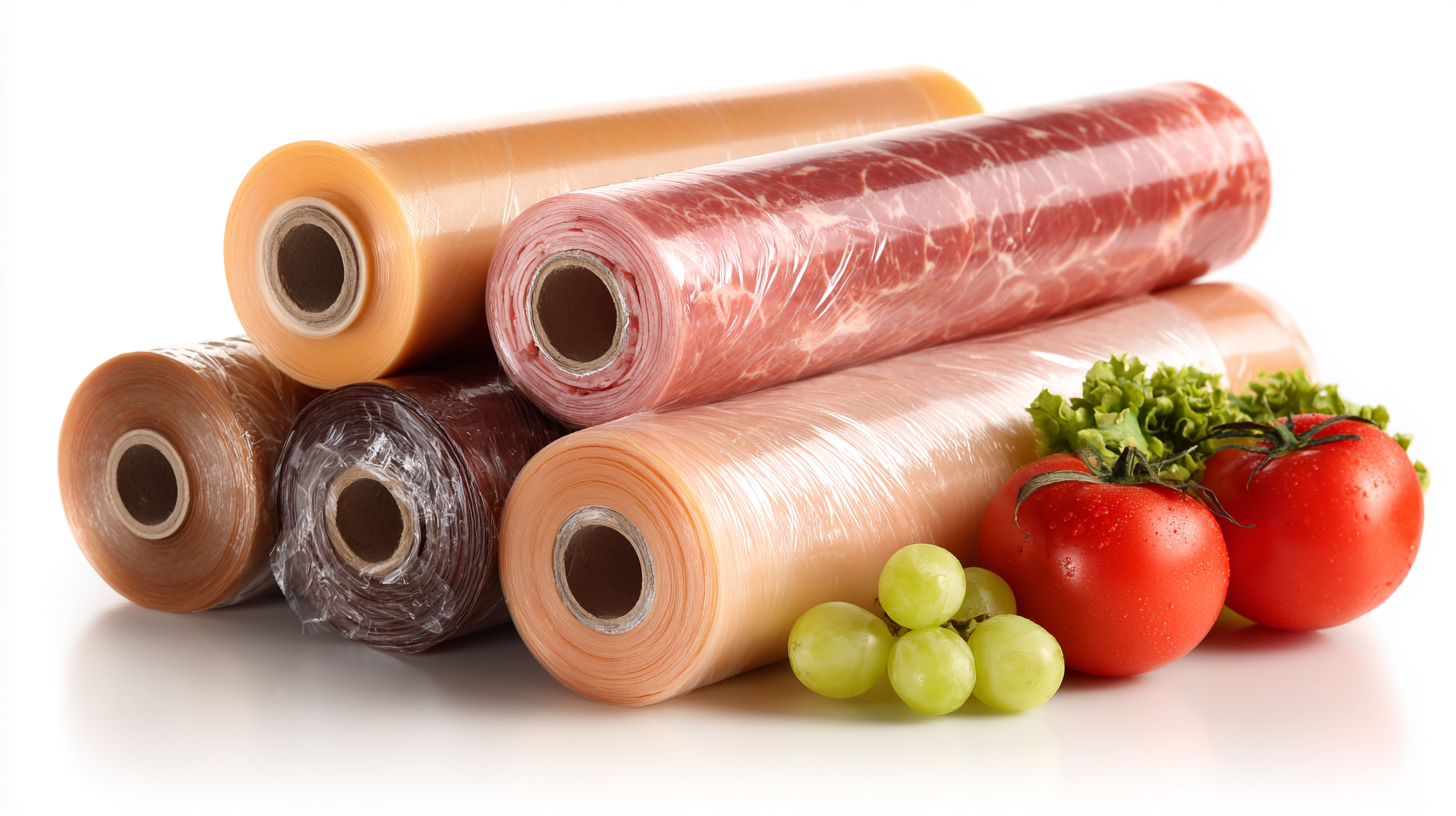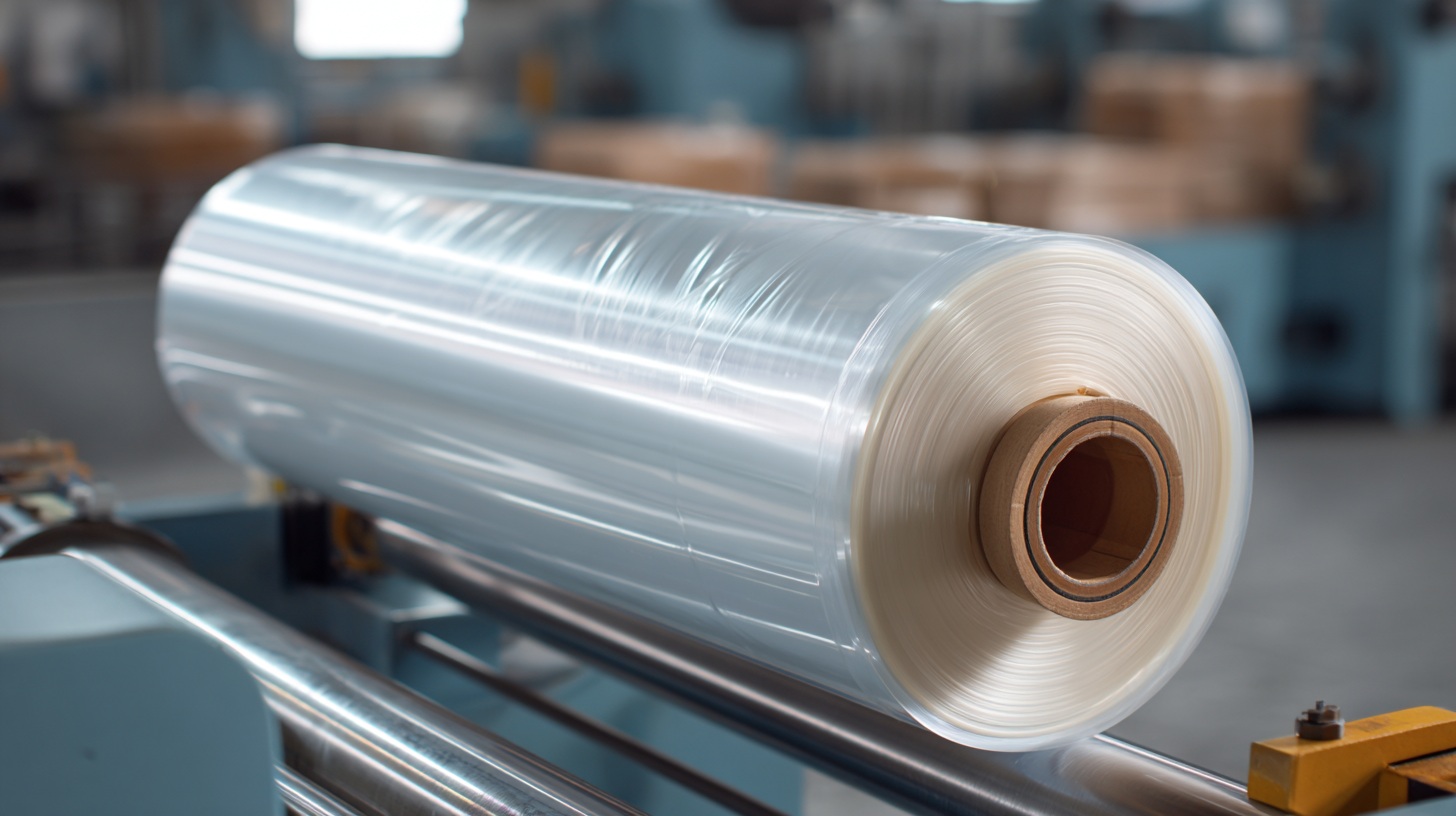Global Trends in Food Packaging: 2025 Market Insights & Case Studies on Best Food Packaging Roll Plastic Film
The food packaging industry is undergoing a transformative shift, driven by innovative materials and changing consumer preferences. According to a recent report by MarketsandMarkets, the global food packaging market is projected to reach $500 billion by 2025, reflecting an annual growth rate of over 5%. Central to this growth is the emergence of Food Packaging Roll Plastic Film, which offers advantages in safeguarding product freshness, extending shelf life, and enhancing visual appeal.

Industry leaders are increasingly turning to advanced plastic films that not only meet functional requirements but also align with sustainability goals. As such, this blog will delve into the latest trends in food packaging, examine case studies of best practices in using Food Packaging Roll Plastic Film, and provide insights into how these innovations can redefine food distribution and consumption in the years to come.
Emerging Innovations in Food Packaging Technologies for 2025
As we head toward 2025, the food packaging industry is undergoing transformative changes driven by emerging technologies and sustainability imperatives. Innovations such as biodegradable films and smart packaging solutions are leading the way. According to a report by Smithers Pira, the global food packaging market is projected to reach $500 billion by 2025, with a significant growth in demand for flexible packaging solutions like roll plastic films, which are anticipated to cover about 42% of the market share. These materials are not only lightweight but also offer superior barrier properties, helping to extend shelf life while reducing food waste.
Tips to consider when choosing food packaging technologies include assessing the product's compatibility with new materials and evaluating their environmental impact. Transitioning to compostable plastics or utilizing oxygen scavengers in packaging can significantly improve sustainability. Moreover, brands should stay informed about regulatory updates on packaging materials to ensure compliance while maintaining consumer trust. Utilizing smart packaging, which can indicate freshness or enhance traceability through QR codes, could become a critical factor in attracting eco-conscious consumers.
Furthermore, a strategic focus on consumer preferences is essential. Research from Mintel suggests that 70% of consumers favor brands that prioritize sustainability in their packaging choices. Leveraging these insights can enable brands to develop tailored packaging solutions that resonate with their audience while aligning with market trends for 2025.
Sustainable Materials: The Shift Towards Eco-Friendly Food Packaging Solutions
As the food packaging industry evolves, the shift towards sustainable materials is becoming increasingly critical. Companies are recognizing the environmental impact of traditional packaging solutions and are exploring eco-friendly alternatives. Biodegradable films, plant-based polymers, and recyclable materials are gaining traction, reflecting a growing commitment to reducing waste and carbon footprints. This trend not only caters to environmentally conscious consumers but also helps brands to differentiate themselves in a crowded marketplace.
Tip: When considering sustainable packaging options, look for certifications like compostable or recyclable labels. This ensures that your products meet environmental standards and contributes positively to brand reputation.
Additionally, innovative packaging designs are emerging that minimize material usage while maintaining product freshness. Sleek designs utilizing less plastic or integrating edible packaging are not just novelties; they represent practical solutions to pressing environmental challenges. Companies that invest in these innovations may find themselves at the forefront of a rapidly changing market landscape.
Tip: Collaborate with suppliers who prioritize sustainability in their manufacturing processes to enhance your supply chain’s overall eco-friendliness. Building partnerships can lead to shared resources and ideas that drive further innovation in sustainable packaging.
Consumer Behavior: How Packaging Influences Food Choices and Sustainability
In today's market, consumer behavior is significantly influenced by food packaging, which serves as the first point of interaction between a product and its potential buyer. Research shows that appealing designs, vibrant colors, and informative labels can effectively capture consumer attention, leading to increased purchasing decisions. Moreover, eco-friendly packaging options have gained traction, with more consumers actively seeking products that align with their environmental values. This shift highlights a growing preference for sustainable materials and practices, forcing brands to reconsider their packaging choices to resonate with conscious buyers.
Additionally, the rise of transparency in labeling has transformed how consumers view food products. Clear information about ingredients and sourcing plays a crucial role in building trust and loyalty among shoppers. As a result, brands are moving towards simpler, minimalist packaging that communicates essential information without overwhelming consumers. This trend not only caters to the demand for cleanliness in product messaging but also reflects a broader commitment to sustainability, as brands seek to minimize waste and promote recycling efforts in their packaging solutions. Such case studies illustrate the evolving landscape of food packaging and its direct impact on consumer choices and behaviors.
Global Trends in Food Packaging: 2025 Market Insights
| Dimension | 2023 Data | 2025 Projection | Consumer Preference (%) | Sustainability Index (1-10) |
|---|---|---|---|---|
| Biodegradable Packaging | 25% | 40% | 60% | 9 |
| Recyclable Plastic | 30% | 35% | 45% | 7 |
| Smart Packaging | 15% | 25% | 50% | 8 |
| Minimalist Design | 20% | 30% | 55% | 6 |
| Multi-functional Packaging | 10% | 20% | 40% | 5 |
Case Studies: Leading Brands Redefining Food Packaging with Plastic Films
As the food packaging industry evolves, leading brands are harnessing the innovative potential of plastic films to redefine their packaging strategies. Companies like Nestlé and Unilever have embraced the shift towards sustainability by adopting advanced plastic films that not only extend the shelf life of their products but also mitigate environmental impact. These films are designed to maintain freshness and quality while incorporating recyclable materials, illustrating a commitment to responsible packaging solutions.

Moreover, case studies from these industry giants highlight the versatility of food packaging roll plastic films. For instance, Coca-Cola has introduced lightweight, single-layer plastic films that reduce material usage without compromising on protective qualities. This move demonstrates a proactive stance towards minimizing waste and improving the overall efficiency of the packaging process. Similarly, Pepsico has developed compostable plastic films that cater to environmentally conscious consumers. These innovations showcase how companies are leveraging plastic films to not only enhance product presentation but also align with global sustainability goals.
Regulatory Trends: Navigating Compliance in the Food Packaging Industry by 2025
As the food packaging industry evolves, navigating regulatory trends becomes imperative for businesses aiming to thrive by 2025. With an increasing emphasis on sustainability and food safety, regulatory bodies worldwide are tightening their standards. According to a recent report by Mordor Intelligence, the global food packaging market is projected to reach $500 billion by 2025, driven by heightened consumer awareness and stringent regulations. Companies must comply with varying standards such as the FDA in the U.S. and the EFSA in Europe, which mandate thorough assessments of packaging materials for safety and environmental impact.

Furthermore, the rise of advanced materials, such as biodegradable plastics and recycled content, presents both opportunities and challenges in compliance. A study from Smithers Pira highlights that environmentally friendly packaging solutions could account for over 20% of the market by 2025. However, businesses must ensure that these innovative materials meet regulatory requirements while still maintaining product integrity. This landscape demands that companies not only adopt best practices in food packaging but also engage with regulatory authorities to stay ahead of the changing compliance landscape, safeguarding their market position in an increasingly competitive sector.

 中国
中国